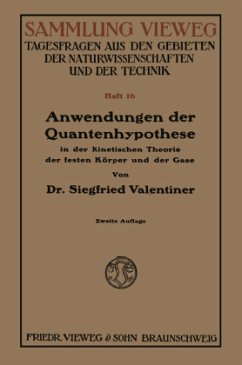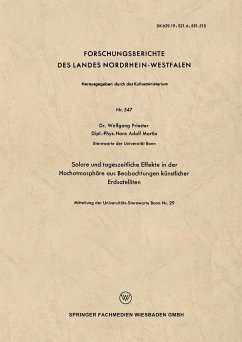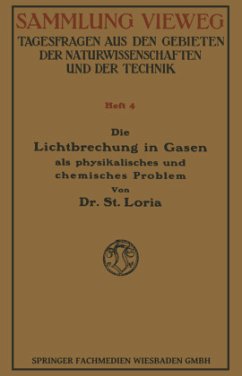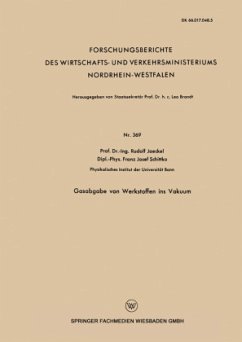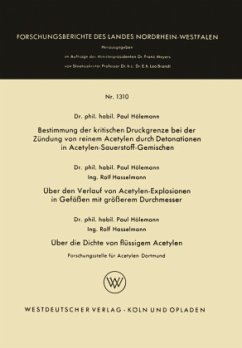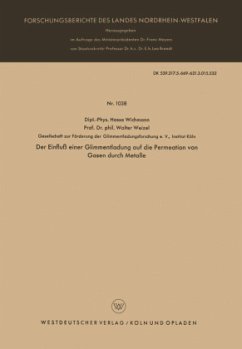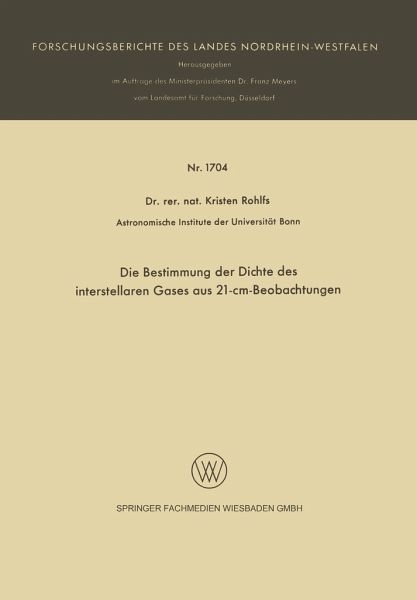
Die Bestimmung der Dichte des interstellaren Gases aus 21-cm-Beobachtungen

PAYBACK Punkte
0 °P sammeln!
Einleitung und Inhaltsi.ibersicht . . . . . . . . . . . . . . . . . . . . . . . . . . . . . . . . . . . . . 9 1. Die Struktur und Geschwindigkeitsverteilung der interstellaren Materi- eine Ubersicht . . . . . . . . . . . . . . . . . . . . . . . . . . . . . . . . . . 11 . . . . . . . . . . . . . . . . 2. Der Zusammenhang der Intensitat der 21-cm-Linie mit Dichte und Temperatur des interstellaren Mediums . . . . . . . . . . . . . . . . . . . . 19 . . . . . . . . 3. Die V erteilungsfunktion der kinetischen Wolkentemperaturen . . . . . . . 23 . A. Die V erteilung der StoBzeiten . . . . . . . . . ....
Einleitung und Inhaltsi.ibersicht . . . . . . . . . . . . . . . . . . . . . . . . . . . . . . . . . . . . . 9 1. Die Struktur und Geschwindigkeitsverteilung der interstellaren Materi- eine Ubersicht . . . . . . . . . . . . . . . . . . . . . . . . . . . . . . . . . . 11 . . . . . . . . . . . . . . . . 2. Der Zusammenhang der Intensitat der 21-cm-Linie mit Dichte und Temperatur des interstellaren Mediums . . . . . . . . . . . . . . . . . . . . 19 . . . . . . . . 3. Die V erteilungsfunktion der kinetischen Wolkentemperaturen . . . . . . . 23 . A. Die V erteilung der StoBzeiten . . . . . . . . . . . . . . . . . . . . . . . 24 . . . . . . . . . . B. Die Abki.ihlungsfunktion des interstellaren Gases . . . . . . . . . . . . . 29 . . . . C. Die Verteilung der Wolkentemperaturen . . . . . . . . . . . . . . . . . 31 . . . . . . . 4. Dichtebestimmung bei endlichem Winkelauflosungsvermogen . . . . . . . 35 . . 5. Wolkenstruktur und Dichtebestimmung . . . . . . . . . . . . . . . . . . . . 40 . . . . . . . . 6. Ein Poisson-Modell der Wolkenverteilung 43 Literaturverzeichnis . . . . . . . . . . . . . . . . . . . . . . . . . . . . . . . . . 49 . . . . . . . . . . . . . . . 5 Summary One of the main tasks of 21-cm investigations consists in the determination of the density of interstellar Hydrogen gas. This has usually been done with the assumption that the Hydrogen gas forms a stratum of more or less uniform density. If Hydrogen clouds exist, they were believed to be transparent for the 21-cm radiation, and the density gradients were supposed to be small. However, in the last years observations accumulated which indicate this picture to be incorrect. The interstellar material seems to be concentrated in clouds of rather high density and considerable opacity but of small diameter. The kinetic temperatures of these clouds need not to be the same for all clouds, in the contrary, rather large temperature variations are indicated. These facts make it necessary to reconsider the derivation of the formulae connecting the measured intensity of the 21-cm radiation with the density of the Hydrogen gas and the kinetic temperature. This paper intends to lead to an improvement for the solution of this problem.







